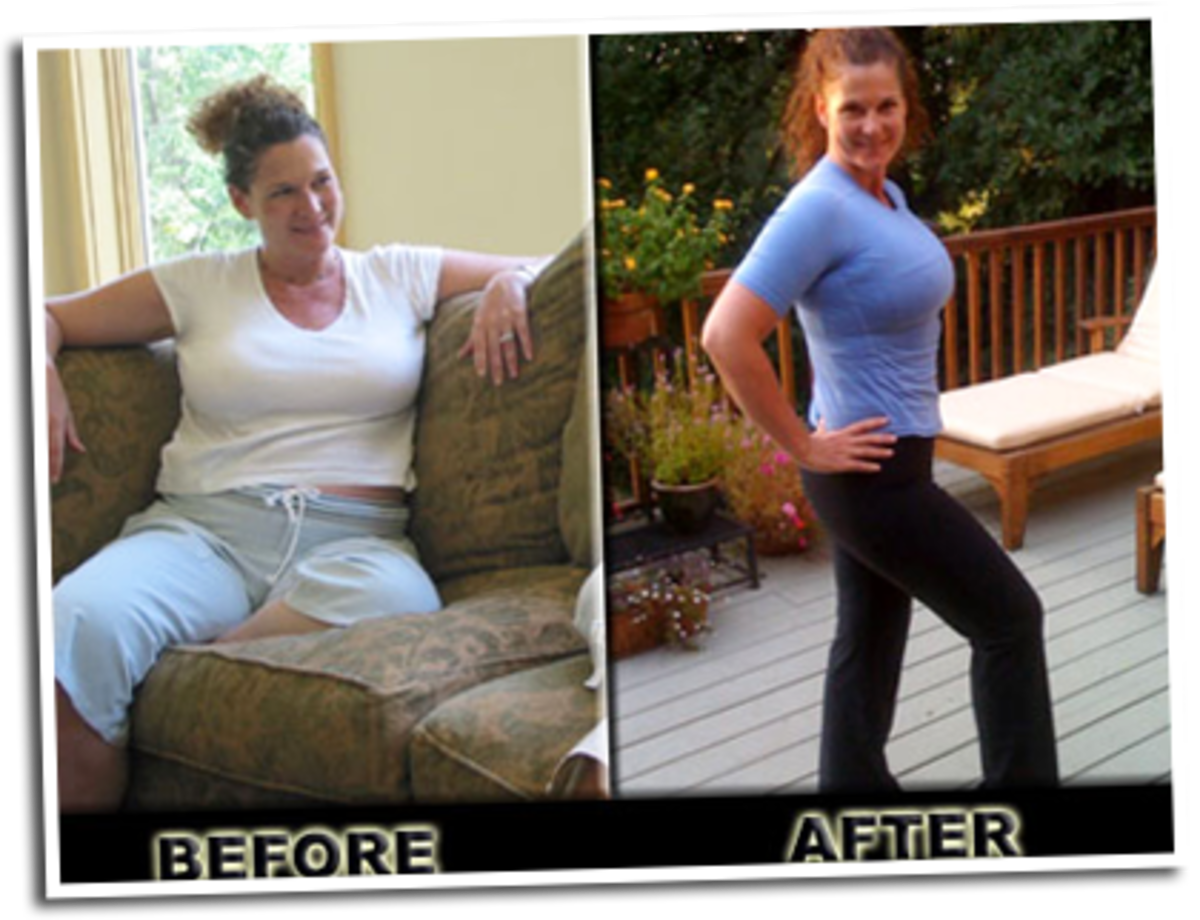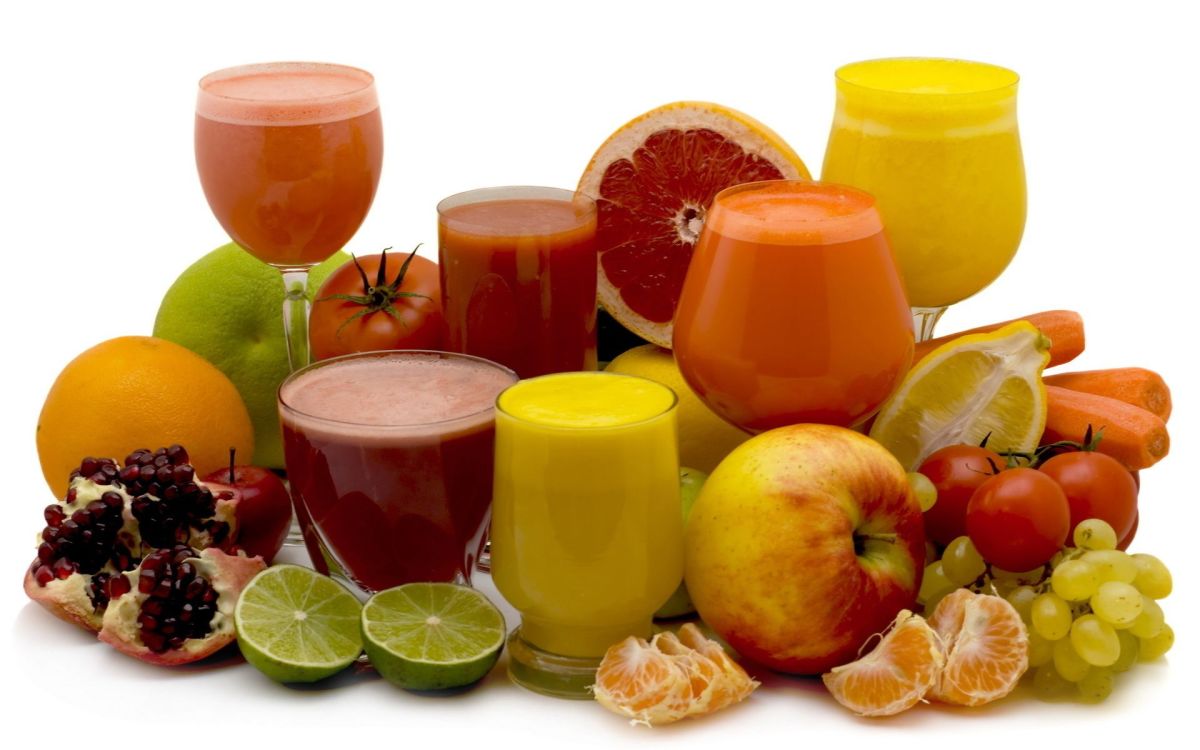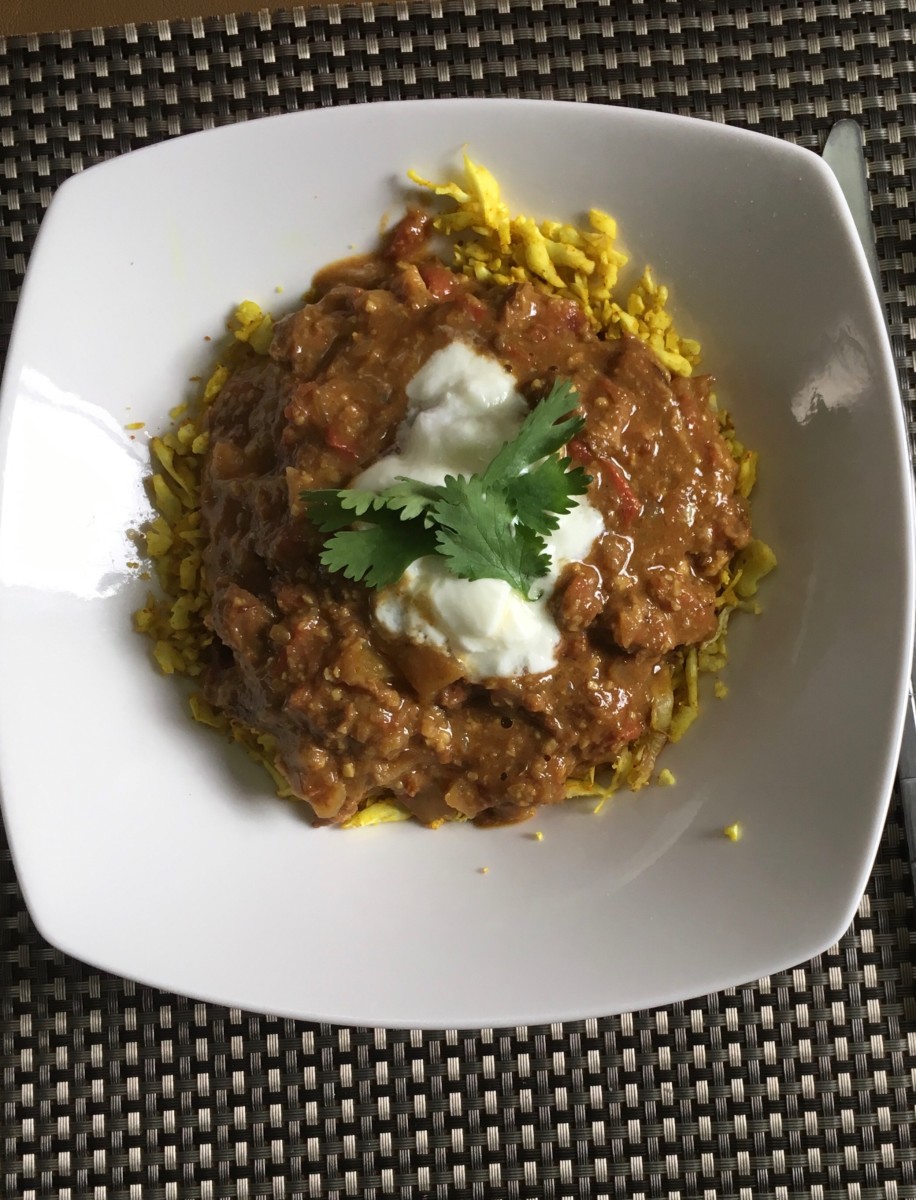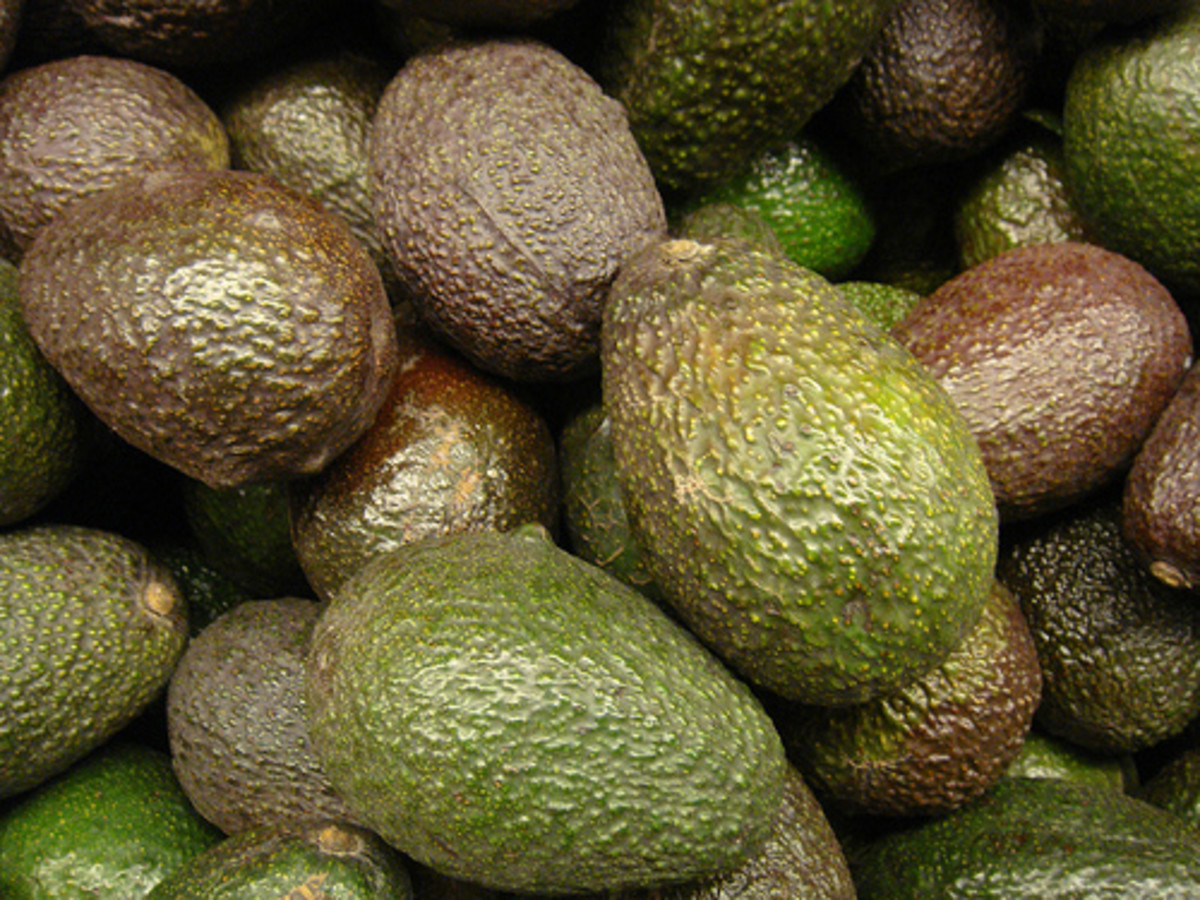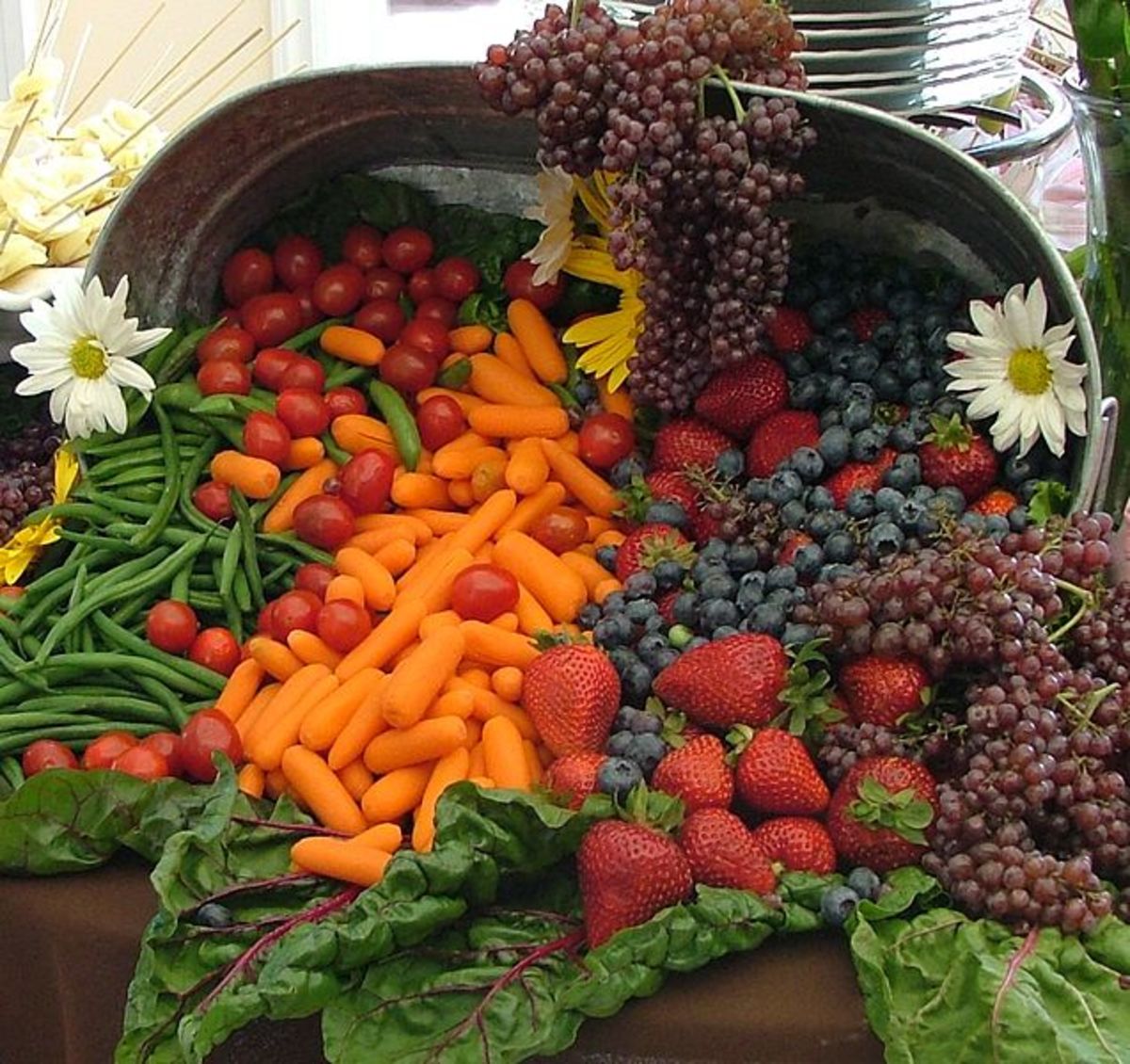- HubPages»
- Health»
- Diet & Weight Loss»
- Healthy Diets
Which Diet is Best For Me?©
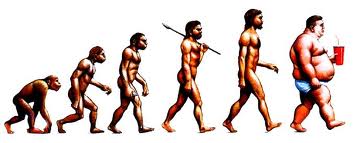
So. I've been trying to figure out the healthiest eating plan (NOT diet, because no one likes the word "diet") for me and my family since I had a stroke in January. This is not a simple task these days given that endorsers pushing Weight Watchers®, Physician's Weight Loss®, Jenny Craig®, MediFast®, SENSA®, Biggest Loser, Mediterranean, Atkins, Mayo Clinic Diet, Slim-Fast®, the Paleo Diet, and the 17- Day Diet, are seemingly in every magazine, radio and television commercial. How do you know which program is the right one? Which one is best? Which one is the simplest? Which one fits my lifestyle? Which one is the most cost-effective? Which one produces the "best" or desired results? The answer to all of these questions is obviously, "it depends on you." I can only tell you my story, and how I know when something works for me.
I was an overweight kid in grade school, junior high, high school, college, and basically my entire life from the time I was six years old. My parents said I began putting on weight after I started first grade—a stress eater, perhaps? I had after all, gone to kindergarten so I was used to a "school" setting and therefore school wasn't anything new. But, could it have been the nuns with their intimidating habits and clickers? I don't recall that stressing me out. In fact, at one point in my young I wanted to me a nun! I can't imagine first grade being stressful. Rather, I remember loving first grade. We had 62 students in our class (a Catholic School, and with the last name Warrington, I was number 60). Because I was the best reader in the class, the nun let me teach the six poorest readers how to read. It was at that point that I knew teaching was for me. I really enjoyed helping others learn what I knew. And what better life skill to teach than reading?
Sorry, I digress. We were talking about the point that I began gaining weight. Maybe it was from Teddy Truehaftt chanting, ♪♪♪"K-A-T-H-Yhy are you so FA-AA-AAAT?"♪♪♪ on the walk to and from school in the third and fourth grades? Or from my Uncle Ralph calling me a "chow hound" because when I was little I enjoyed the smorgasbord at his VFW post on Sunday afternoons. Who didn't? It had everything you could possibly want. Those comments hurt and affected the way I envision myself especially when I look in the mirror, even to this day. Could it have been all the five-cents-a-scoop ice cream cones I ate at the Franklin Ice Cream factory that was in my neighborhood? Or all the butter and cream my favorite Grandmother used in her delicious Czech pastries? There are a lot of reasons besides stress that could have caused my weight gain and school may not have had anything to do with it.
Who ever knows the psychology behind why we develop some of the habits we do. I know that when you grow up in the 1950s in a middle-class household with 6 people, (and then 8 when we added two foster sisters) carbohydrates played a large role in our daily diet. Bread was 39 cents a loaf. Potatoes were five cents per pound. Crisco was still widely used. And of course, my Grandmother used butter in everything. There was no such thing as Canola Oil, Coconut Oil, or Flax Seed Oil. At least not at our neighborhood grocery store.
I also know that due to a genetic endocrine condition, I stopped growing taller in the sixth grade. All my friends got taller and thinner in junior high and high school, but not me. Oh, my bust got larger (and larger. . . and), and so did my derriere; but my legs still didn't grow. One of my sisters is about five foot six, two are five foot five or six, and my mother was five foot five. Try as I might, I couldn't stretch those legs to reach beyond five feet two and ¾ inches (on a good day). Why was I singled out to be the shortest in the family? But then again, my paternal Grandmother was only 4 foot 9 inches. Ah, genetics. One of the things about our bodies that we cannot change.
Genetics obviously played a part as I am shaped like both my Grandmothers and my Father's Sisters. I was never a very active child. Sure, I played wiffle ball in the summers, ice skated in the winter, and roller skated all year round. But my favorite hobbies were reading, playing my flute and, as I got older, writing. Not physically active endeavors. I was never an athletic-type, and I was very self-conscious of my body. And as anyone who isn't active knows, it's a lot easier to put on weight when you're not getting any exercise. That necessarily causes you not to want to exert yourself because you're not used to it and it makes you sweat. I would rather do almost anything than sweat. (Yes, I realize that women don't sweat. Horses sweat, Men perspire. Women "glisten"). Regardless, sweating is not my cup of tea. It's really too bad that there weren't more women's sports from which to choose when I was in high school and college. I would have loved playing golf, tennis, cycling, or swimming. Swimming is an awesome sport as there is no glistening involved and that is my first choice for exercise today (not for that reason, however). I can remember my Father hounding me about my weight for as long as my memory stretches. It's not even that I was terribly obese. I recall weighing 128 pounds in the sixth grade (when I reached my tallest point). But because I had heard, for what seemed like forever, that I was fat, I thought I was. Alas! The games our psyche plays! But, let's get back to eating programs (NOT diets).
I have been on what seems like every program there is. With varying rates of success, or failure depending on how you characterize it. I gained 50 pounds on Weight Watchers in the early 1970s. Well, actually I lost 30 pounds, but then gained back that 30 plus an additional 20. I tried Jenny Craig® in the late 1970s. I did pretty well on that, but when I started back to college, I began gaining weight again (stress?). In the early 1980s, I lost a considerable amount of weight while I was in law school. At that time, I was working three jobs while trying to manage a household, a husband, two children, classes, studying, and Moot Court. That was also about the time that my marriage fell apart and I was hardly eating at all. I don't think you can attribute that loss to anything other than stress. In the late 1980s, I tried Physician's Weight Loss program and lost a few pounds, but mostly inches. I gained that all back. Around 1990 I persuaded my physician to put me on MediFast®. I did really well on that once I got used to drinking my meals and not eating anything at all. I probably lost between 25 and 30 pounds. It was fine once you got into the habit of having no food. And I am pretty persistent—at some things. But then there was the day (it was summer) that Wendy's® added chili dogs to its menu. I fought with myself for about a week before I caved in, went to the drive-through and ordered two. That was it. I was through with the liquid program (NOT diet). I just couldn't get back into it. During the 1990s the Atkins diet became popular and I tried that. Eating all that protein didn't seem right, and philosophically I didn't believe that bacon was really that healthy, and that lack of fruits and vegetables supposedly was.
Somewhere or other in the late 1980s and early 1990s I stumbled across the Fit for Life lifestyle by Harvey and Marilyn Diamond1 and I gave it a try. I read their first book (today there are several of them), and I have to say that while I followed the program, I lost more weight and felt healthier than I ever did before on any other program (NOT diet). The concept made a lot of sense to me. It's based the theory that if your body is using all your energy to digest food, you have little energy left over to function. Therefore, why not eat in accordance with the natural way the human body functions? An essential principle is that your body fights against itself when you eat a protein and a starch together. Their reasoning for this theory (although it may not be medically, or chemically accurate) is that the stomach requires both acid and alkaline to digest foods. Proteins require one and carbohydrates require the other. But if you eat a meal that requires both acid and alkaline to digest it, the food does not digest because the acid and the alkaline neutralize each other. The food that needs to be digested sits in your body undigested and ferments, causing that full, bloated, gassy feeling. Whether or not it was accurate, it worked for me. The four basic principles of the Fit for Life lifestyle (as set forth in the first book) are: 2
- Fruits are best eaten fresh and raw. Where possible they should be eaten alone or a full one-half hour before eating any other food. Nothing other than fruit should be eaten before 12 noon.
- Carbohydrates & Proteins should never be combined in one meal.
- Water dilutes stomach digestive juices and should never be drunk at meals.
- Dairy products are considered of limited value and due to their allergic capacity should seldom, if ever, be eaten.
It worked me for several reasons. First, an eating program that requires mostly fruits and vegetables was healthy. I felt better than I had in a long time. I began playing on a city co-ed softball team (at age 35, I was on my first softball team!). I began playing tennis again. I learned to play golf. In other words, I had more energy so I could engage in more physical activity. I felt better when I was active and limited my sedentary activity because it made me tired. Second, there was no counting anything—not carbohydrates, not calories, not sodium, nothing. Sodium intake was limited to sea salt, and no processed food was permitted. I wasn't cooking for anyone except for myself at that time, so it was simple to follow. Third, it was summer and there was an abundance of fresh fruits and vegetables in Northwestern Ohio. When the greater percentage of the program is fresh fruits and vegetables, access to them becomes important. I began to stray when late fall and winter set in and fresh produce became difficult to obtain. I could no longer play tennis, golf or softball. While I was fit for a while, that soon became a memory. I decided to forget weight loss programs and stick with what my common sense deemed as healthy—moderate carbohydrates, low proteins, low-fat, and lots of fresh fruits and vegetables
I mention the Fit for Life lifestyle because it reminds me of the Paleo Diet3 that I am following now. Yes, it is touted as a "diet." The novelty of it is that it was not developed or created by a mortal being. Our ancestors, together with every other living human on the planet, ate this way until approximately ten thousand years ago. It was at that time that farming began, plants were tamed and cultivated, and animals were domesticated. Our bodies are genetically adapted to eat what our hunter-gathers ate.4 That principle, i.e., the evolutionary basis for maximum human nutrition essential for the Paleo Diet, will never change. At least not in our or our children's or grandchildren's lifetimes. The Paleo Diet is simple. There is no calorie, sodium or carbohydrate counting. You can eat as much as you want and will not have the bloated, gassy feeling that carbohydrates (especially grains and legumes) and processed foods cause. It is not difficult to follow because it makes complete sense. Don't eat foods that were not available to our ancestors, wherever on the earth they lived.
So what was available? Simple: Lean proteins, fruits and mono-starchy vegetables, no legumes, no dairy products and no processed foods. Complex carbohydrates from grains and legumes were not even available until farming began. These basic principles are reflected in the Seven Keys of the Paleo Diet. They are as follows:5
1. Eat a relatively high amount of animal protein.
2. Eat fewer carbohydrates than the recommended ADA amount, but eat LOTS of good carbohydrates, i.e., fruits and vegetables.
3. Eat a lot of fiber from non-starchy fruits and vegetables.
4. Eat a moderate amount of fat with more good (mono saturated and polyunsaturated) fats than bad (trans and certain saturated) fats, and nearly equal amounts of omega-3 and omega-6 fats.
5. Eat foods with a high potassium and low sodium content.
6. Eat a diet with a net alkaline load (not acid).
7. Eat foods rich in plant phytochemicals, vitamins, minerals and antioxidants.
At this point, if you're like me, you are shaking your head and muttering to yourself, "what the H. . . does all that mean?" It means this. Eat healthy. Eat what your body was intended to eat. Don't eat what isn't grown naturally, born naturally from animals (land or sea) or made from ingredients that weren't available to cavemen. And remember, there were cavemen all over the world and in all climates and terrains. That gives you an incredible selection from which to choose. You won't believe how simple it actually is. If you want more information about this diet, I suggest you consult The Paleo Diet by Loren Cordain, Ph.D. This is the granddaddy of the books on the topic. He also collaborated in writing, The Paleo Cookbook.6
Once I decided to try the diet, I did my own research and found that there are literally hundreds of articles, blogs, and Pinterest® posts on the subject. Personally, I don't use The Paleo Cookbook because when I perused it, I didn't find many dishes that appealed to me. Some of them call for odd and expensive ingredients and I knew my Grandchildren wouldn't eat them. I believe that common sense tells you that basic foods can be adapted to a Paleo lifestyle without much effort. You don't have to be exceptionally creative to follow the diet. Check out my Pinterest® boards7 for various categorized Paleo recipes and Basics of the Paleo Diet. It's nice to know that there are simple, quick examples of meals that have been tested by regular people like you and me, not just scientists and dieticians. What I have really been surprised at is that my Grandchildren will eat Parsnip fries, Fresh Banana and Blueberry Pancakes, Almond Banana Smoothies, Mediterranean Chicken or Fish with Vegetables (including Kale) and Paleo-friendly Meatloaf. They especially love roasted broccoli and cauliflower and my Savory Salad. They shocked even themselves by liking the food.
I am NOT telling you which diet or lifestyle or program is best for you. Everyone is different. My Daughter-in-Law believes that the Paleo Diet is difficult to maintain. I find it simple, perhaps because I have been planning shopping lists and meals since the early 1970s when I had a $30-a-week grocery budget for a family of four, and I had to make it work. However, she is an R.N. and works 12-hour shifts, so I understand her difficulty. That's not to say, however, that it can't be done. You need to follow what is workable and healthy for you. I have Type II Diabetes and Hypertension, so it's not like I don't have serious health issues to consider as well. In fact, my "numbers" have been in better control than they have ever been since I've been following the diet. The weight has been falling off with no effort. I haven't had any stomach or digestive problems when in fact three years ago I was diagnosed with Gastroparesis (paralysis of the stomach—failure of my stomach to digest food). I had constant diarrhea and gas (I know, TMI). It disappeared when I began this diet. In short, my body is telling me that this program works for me.
Check out my Pinterest® boards. If you're at all interested, I think you'll like what you see. Check out the boards of other Paleo Diet followers, and other Paleo recipes posted on Pinterest®. If you have any questions about any of the recipes, post a Comment below and I'll answer you. I've posted many recipes that can also be adapted to Paleo principles. Just to give you an idea of what the diet involves, I've included three Paleo recipes today. The first one is for my Savory Salad. The second is for a delicious Meatloaf. For those of you with a sweet tooth who might be wary that from now on you'll have to forego all sweets, I've included a recipe for Banana Almond Ice Cream. There are many, many ice creams and desserts you can make in accordance with the Paleo Diet. My family thinks all three of these recipes are delicious. Try them out, and in the Comment Section, let me know what you think. If you're already a Paleo Diet follower, I'd be interested in how it works for you. Most importantly, in choosing any program, eat Healthy and listen to your body. It will tell you what is best for you!
©2013 by Kathy Striggow
This article may not be reproduced or reprinted in whole or in part without the express written permission of the author.
1Diamond, Harvey and Marilyn Diamond. Fit for Life. New York:Wellness Center, 1985.
2Id.
3Cordain, Loren. The Paleo Diet. Hoboken, New Jersey:John Wiley & Sons, Inc., 2002, xi.
4Id. at 3.
5Id. at 25.
6Cordain, Loren, Nell Stephenson, and Lorrie Cordain. The Paleo Cookbook: More Than 150 Recipes for Paleo Breakfasts, Lunches, Dinners, and Snacks, and Beverages. Hoboken, New Jersey: John Wiley & Sons, Inc., 2011.
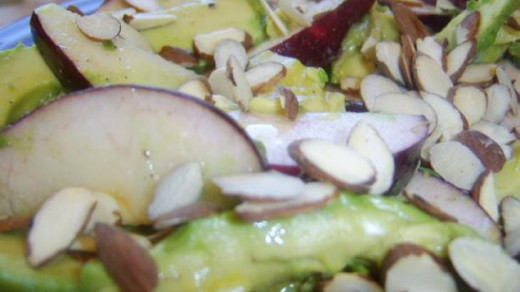
KATHY'S PALEO SAVORY SALAD
Ingredients8
Red and Green Romaine Lettuce, Butter Lettuce, Bibb Lettuce or other Leaf Lettuce, torn into bite-sized pieces (as much as your family will eat)
2-3 Oranges, peeled and slices cut in half OR 1 small can Mandarin Oranges (unsweetened), drained
1 Crisp Apple (preferably red or red & yellow), diced OR 1 Ripe Pear (I like red), diced OR both
1 handful of Dried cherries, Cranberries, Golden Raisins, or a combination
1 avocado, peeled and diced
1/8 to 1/4 cup Sliced Blanched Almonds, toasted
Dressing:
¼ c. Fresh Lime OR Lemon Juice
½ c. Light Olive Oil
1 tsp. Garlic, minced
1 tsp. Dijon Mustard
Directions
1. Combine lettuce, oranges, apple (or pear), raisins and/or cherries, and avocado.
2. Blend all dressing ingredients together.
3. Toss salad with dressing.
4. Top with the toasted almonds and serve immediately.
OR, to prepare in advance:
Prepare all salad ingredients except avocado and apple (or pear) and refrigerate until serving time. Add the remaining fruits just before adding the dressing so that they don't turn brown.
Toss the salad with the dressing, top with the almonds and serve.
To make this a meal, add 2 cups thinly sliced grilled, rotisserie or cooked chicken (or cooked shrimp), and if you eat cheese, Feta. Then it's a Summer Savory Salad a' la Waco! It's amazing!
You can also add or replace any of the ingredients with any other fruits you like--pears, strawberries, sweet yellow or sweet red onions, sliced grapes (any color).
8I have to credit my catering Buddy, Chef Extraordinaire, Food Designer and Friend, Lisa Van Hoven, with the basic recipe for this salad. She introduced it to me back in the late 1980's when she was just beginning her catering business, Simply Elegant. Thank you, Lisa for all the great food and great memories!
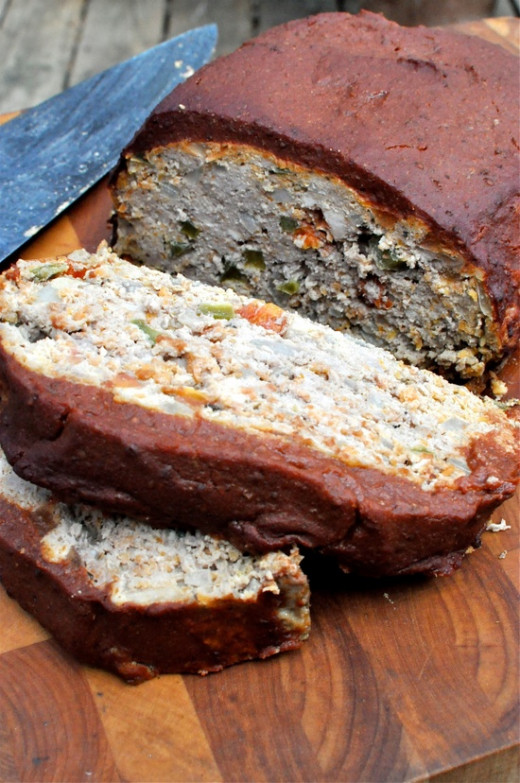
PALEO MEATLOAF
Makes ~8 servings
Ingredients:
LOAF
24 oz. (2-1/2 lb.) Lean Ground Turkey (I used 93% lean, a combination of dark and breast meat)
1 cup Shredded Carrots
1 cup Sweet Onion, chopped
1 Red or Green Bell Pepper, chopped
1 cup Chopped Fresh Tomato
1/2 to 3/4 cup Almond Meal (Simply grind Blanched Almonds in the food processor. Get it as fine as you can.) It is used as the binding agent.
2 Eggs
½ tsp Black Pepper
¼ tsp. Cayenne Pepper, if desired
Sauce
1 can (151/2 oz.) Tomato Sauce (low or no sodium)
1 can Tomato Paste
3 Tbsp. Grainy/Spicy Mustard (low or no sodium)
2 Tbsp.l Balsamic Vinegar
1 Tbsp. Pure Maple Syrup
Directions:
1. Preheat oven to 375° F.
2. Mix all the loaf ingredients together. I recommend you use your hands to smash and combine – you can feel when the texture is even.
3. In an oven safe pan, form your loaf. I coated a baking sheet with foil and baked it on that
4. Bake at 375° F for 45 minutes.
5. In a separate bowl, whisk all ingredients for your sauce together.
6. At the end of the 45 minutes, pull loaf from oven and turn heat up to 450 F.
7. Spread the loaf with the sauce. Like a cake, place all the sauce on top of the loaf and carefully spread down the sides until evenly coated.
8. When the oven temperature reaches 450 F, place the coated loaf back in the oven and bake for an additional 15 minutes.
9. If the tomato sauce still looks watery, leave in the oven for 5 minute intervals until it has a texture you’re happy with.
Let cool slightly, then serve!
[Note: this meatloaf makes for amazing leftovers. Just cover with plastic wrap and reheat slices when you want. It will keep for 4-5 days in the fridge.]
Prep Time: 20 minutes
Bake Time: 1 hour
Adapted from http://fedandfit.com/2013/02/07/paleo-meatloaf
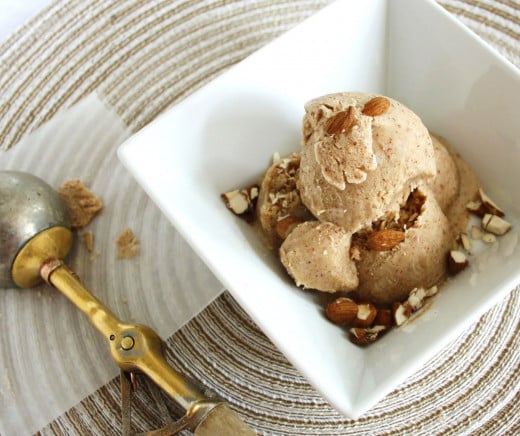
PALEO BANANA AND ALMOND ICE CREAM
Ingredients
2 ripe Bananas, peeled and cut into chunks
¾ cup Natural Almond Butter, smooth or crunchy
1 ½ cups Coconut Milk
2 tsp. Pure Vanilla Extract (or Essence)
Handful of Almond Slices or Slivers, Blanched or Toasted for garnish
Directions
1. Place bananas, almond butter, coconut milk and vanilla extract or essence in blender and blend until smooth.
2. Transfer the mixture (it will be the consistency of a smoothie) into a freezer-proof container and freeze for 1-2 hours (depending on your freezer's temperature), or until the consistency of ice cream. You could also drink it like this as a smoothie. If you freeze it for longer than 2 hours it will be like ice become rock hard. To avoid chipping a tooth, it is best to freeze for a shorter duration, checking occasionally until it reaches the desired consistency.
3. To serve, scoop into serving bowls and garnish with the almond slivers or slices.
©2013, 2016 by Kathy Striggow
This article may not be reproduced or reprinted in whole or in part without the express written permission of the author.

